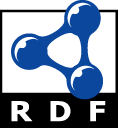Helically Chiral Hybrid Cyclodextrin Metal-Organic Framework with Circularly Polarized Luminescence
Metadatos
Afficher la notice complèteDate
2022Referencia bibliográfica
J. Am. Chem. Soc. 2022, 144, 21, 9380–9389
Patrocinador
The NUANCE Center has received support from the SHyNE Resource (NSF ECCS-2025633), the IIN, and Northwestern’s MRSEC program (NSF DMR-1720139). This research was also supported by FEDER/Junta de Andalucía-Consejería de Economía y Conocimiento/Proyecto P20_00162 and projects PID2020-113059GB-C21 and PID2020-114256RB-I00 funded by MCIN/AEI/10.13039/501100011033 in Spain. A.M.O. acknowledges her FPU contract (FPU16/02597) funded by MCIN/AIE/10.13039/501100011033 and FSE “El FSE invierte en tu futuro” in Spain.Résumé
Three achiral polycyclic aromatic fluorophores─namely, 1-pyrenecarboxylic acid, 9-anthracenecarboxylic acid, and perylene-3,9-dicarboxylic acid─were chosen based on their desired properties before being incorporated into the construction of a K+-carrying gamma-cyclodextrin (γ-CD)-based metal–organic framework (CD-MOF-1) and γ-CD-containing hybrid frameworks (CD-HFs). Among these fluorophores, only the pyrene-carrying one shows significant noncovalent bonding interactions with γ-CD in solution. This fluorophore is encapsulated in a CD-HF with a trigonal superstructure instead of the common cubic CD-MOF-1 found in the case of the other two fluorophores. Single-crystal X-ray diffraction analysis of the trigonal CD-HF reveals a π-stacked chiral positioning of the pyrene-carrying fluorophore inside the (γ-CD)2 tunnels and held uniformly around an enantiomorphous 32 screw axis along the c direction in the solid-state structure. This helix-like structure demonstrates an additional level of chirality over and above the point-chiral stereogenic centers of γ-CD and the axial chirality associated with the self-assembled π-stacked fluorophores. These arrangements result in specifically generated photophysical and chiroptical properties, such as the controlled emergence of circularly polarized luminescence (CPL) emission. In this manner, a complete understanding of the mechanism of chirality transfer from a chiral host (CD-HF) to an encapsulated achiral fluorophore has been achieved, an attribute which is often missing in the development of materials with CPL.
![pdf [PDF]](/themes/Mirage2/images/thumbnails/mimes/pdf.png)






